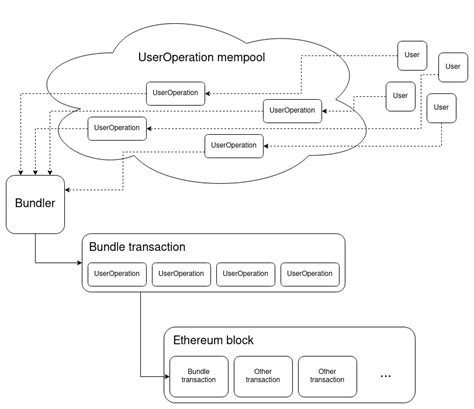The evolution of the blockchain: can Ethereum be a network alone?
As the largest blockchain project in the world, Ethereum has undergone significant transformations over the years. Since its first days as an open source alternative to Bitcoin, to its current status as a decentralized platform for various cases of use beyond cryptocurrencies, one of the most debated subjects among fans is if Ethereum can really be a single test.
One of the main concerns of the decentralized architecture of Ethereum is that it is strongly based on the contributions and the participation of minors. As mentioned, the Bitcoin network is designed to ensure the safety and integrity of transactions through its consent mechanism. However, this also means that any harmful actor could potentially stop the entire network by targeting a single mining knot.
Can this raise an important question: can Ethereum be more than a simple solid solid network? Can we design it so as not to count on nodes or central minors?
The case of a lonely test
One of the main subjects in favor of the creation of a decentralized network such as Ethereum is that it would allow greater security and resilience. Without the need for centralized authorities, such as pools or mining exchanges, the risk of harmful actors that handle the network could be considerably reduced.
In fact, this has already been demonstrated in the form of “51% of attacks”, in which an attacker could potentially control the majority of the mining power on a particular block chain. This would allow them to manipulate transactions and modify their integrity without fear of being detected by nodes or central minors.
The advantages of a solid network with a hard test
So, can Ethereum be a solid resistant network? The answer is a sensational yes. By eliminating the need for centralized authorities, such as the extraction pool or exchanges, we could create a decentralized network more resistant to interruptions and attacks.
Here are some potential advantages:
* Increase in safety : without central knots or minors, there would be less vulnerability in the system.
* Improvement of decentralization : a network of proof alone to concentrate in the risk of control in the hands of certain individuals or organizations.
* Improvement of resilience : In the event of greater disaster or interruption, a decentralized network like Ethereum could continue to operate without interruption.
Challenges and limitations
Although the idea of a network alone as an intriguing and several challenges and limitations must be confronted:
* Evolution : A decentralized network would require significant improvements in scalability, which would have an impact on the overall efficiency of transactions.
* Interoperability
: Since more nodes work independently, there may be interoperability problems between different platforms or blockchain networks.
* Security risks

: Although a solid powerful network can reduce certain safety risks, it is essential to balance it with regard to potential advantages.
Conclusion
In conclusion, although the creation of a decentralized network like Ethereum is theoretically possible, it would require significant investment and development efforts. The main challenge lies in the guarantee of scalability, interoperability and security, which are all fundamental components of any blockchain platform.
However, for those who appreciate decentralization, autonomy and increase in security, the prospect of a network alone based on Ethereum can be tempting. Who knows? We could see a new generation of decentralized applications emerging which exploit these innovative characteristics.
While we continue to push the limits of what is possible with blockchain technology, it is essential to explore new solutions and approaches.

